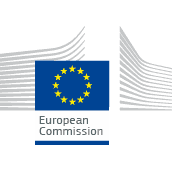
Protection of all road users in crashes
Date de clôture : 19 oct. 2017
APPEL À PROJET CLÔTURÉ
APPEL À PROJET CLÔTURÉ
Entrepreneuriat et PME
Innovation
Coopération internationale
Transport
Horizon Europe
Recherche
Topic Description
Specific Challenge:The continued introduction of active safety systems has the potential to reduce accidents. Nevertheless, the risk of collision and particular crash situations will still remain. An approach will be needed that will ensure improved crash safety in those circumstances. A number of societal trends add to this challenge such as the ageing population, an increase in the number of powered and non-powered two-wheelers and the introduction of green, light, sub-compact cars.
An important step forward will be to develop fully integrated safety systems and deploy them so that they provide better protection for all road users. Emerging new vehicle types and the possible use of Cooperative Intelligent Transport Systems (C-ITS) would need to be considered. The application of advanced safety features and the development of personal safety equipment can also be seen as ways to reduce fatalities and injuries to pedestrians, cyclists and riders of Powered Two Wheelers (PTWs). In addition, simulation tools (including new virtual human body models) will need to be developed to assess new safety systems and determine their effectiveness and potential impact.
With respect to competitiveness, user protection has been an area where European industry has exhibited technology leadership, but this is now being increasingly challenged worldwide.
Scope:Proposals should focus on one or several of the following aspects:
―Vehicle based systems such as: solutions for improved crash compatibility; optimisation of restraint systems by including pre-crash information; and methods and requirements to assess safety performance in traffic of extremely low-mass vehicles.
―Personal protection such as: development and testing of focused personal safety equipment for various road user categories, to warn them adequately and/or protect them in the most safety critical situations; and integrated assessment methods for the overall safety of road users and solutions that enhance their protection.
―Crash simulation such as: computationally efficient and robust crash simulation tools; implementation of virtual testing; and development of virtual human body models of road users and situations not currently available.
Proposed actions should focus on fully integrated safety systems.
Consideration should be taken of gender aspects such as body structure and stature and other demographic factors such as the disabled (persons of reduced mobility), ageing, obesity, etc.
Participation of SMEs with proven experience in these areas is encouraged.
Links with Member State initiatives in this area are encouraged.
In line with the strategy for EU international cooperation in research and innovation[[COM(2012)497]], international cooperation is encouraged, in particular with industrialised countries (i.e. US, Japan, Canada, Australia) and emerging economies (primarily China, India, Brazil). Proposals should foresee twinning with entities participating in projects funded by US DOT[[United States Departement of Transportation (http://www.dot.gov/).]] to exchange knowledge and experience and exploit synergies.
The Commission considers that proposals requesting a contribution from the EU of between EUR 4 and 9 million each would allow this specific challenge to be addressed appropriately. Nonetheless, this does not preclude submission and selection of proposals requesting other amounts.
Expected Impact:By providing an integrated approach to safety systems, actions are expected to make a direct contribution to the reduction of fatalities and severity of injuries, as well as the number of injured persons. They will deliver measures that will make the 'triangle' of European road users, vehicles and infrastructure safer. In this way, actions are expected to contribute to important savings in the health system linked with the reduction of accidents and injuries.
Proposers are expected to demonstrate how the project results will have a significant impact on road safety casualties and injuries and how they will make an effective contribution to the standardisation of products and testing techniques.
A credible strategy is expected to demonstrate the future full scale manufacturing of critical products developed in the project in Europe.
Lien officiel : Disponible pour les utilisateurs enregistrés




S'il vous plaît Se connecter pour voir cette section